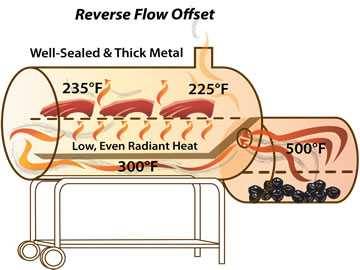I've mostly had smaller vertical smokers, currently use an 18.5 WSM (regret not getting the 22.5), but when looking at non-vertical pits I notice nearly every one is an offset firebox style. Why is this?
I did find one manufacturer that makes a T-style pit with the firebox below. This design seems like it would be more efficient and easier to get a more consistent heat across the pit than when the fire is off to one side.
I know of tuning plates and such to help equalize temps, but just curious why pits with the firebox below are not as prevalent. Do they tend to overheat the pit too easily? Or is this one of those nostalgia things where "pits have always had the box on the side, so that's how they should be"?
I imagine there are Pros and cons of both.
I did find one manufacturer that makes a T-style pit with the firebox below. This design seems like it would be more efficient and easier to get a more consistent heat across the pit than when the fire is off to one side.
I know of tuning plates and such to help equalize temps, but just curious why pits with the firebox below are not as prevalent. Do they tend to overheat the pit too easily? Or is this one of those nostalgia things where "pits have always had the box on the side, so that's how they should be"?
I imagine there are Pros and cons of both.






